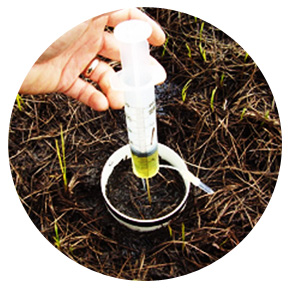Nutrient Deficiencies

Nutrient deficiencies can have a devastating impact on the health of a tree. The most common deficiencies in landscape trees are nitrogen, phosphorous and potassium. Some telltale signs of a lack of proper nutrition include a reduced amount of shoot growth and dieback of certain parts of the plant. One of the most problematic conditions caused by nutrient deficiencies is Chlorosis. Chlorosis is caused by a lack of chlorophyll, resulting in a massive downturn in the production of carbohydrates.
Soil analysis is a useful way to determine if the surrounding land is missing some vital elements and, if so, what those elements might be. Make
sure to take multiple samples from various soil depths in order to more accurately access what action should be taken. One aspect that should be tested is the texture, or the amount of particles from clay, sand and silt that are present in the soil. The makeup of these particles can affect the soil’s structure and the availability of nutrients like water and air. How effectively the soil accommodates drainage should also be determined.
Adding missing elements back into the mix of the soil can be achieved through a variety of different means. If nitrogen is needed, materials containing the element can be injected into the surrounding soil. These materials might include calcium nitrate or ammonium sulfate. Potassium can be integrated via potassium sulfate or potassium nitrate; fertilizers containing the element are also available.

